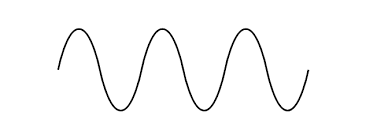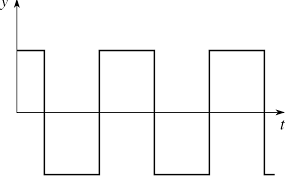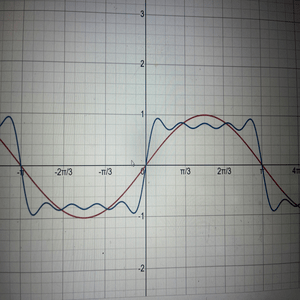Fourier Series and Transform
A Fourier series is an expansion of trigonometric functions to model periodic functions. This method proves useful in the study of harmonic systems as the analysis in a more familiar domain is much simpler than in its original domain. It has a variety of applications ranging from signal processing to quantum mechanics. The Fourier Series is defined as:
[math]\displaystyle{ f(x)=\sum_{n=1}^{\infty}{a_n\cos{(\frac{nx}{L}})}+\sum_{n=1}^{\infty}{b_n\sin{(\frac{nx}{L}})} }[/math]
for [math]\displaystyle{ x\in[-L,L] }[/math]
Intuition
Many physical systems can be modeled by square waves. Consider systems with on-off behavior, similar to an on-and-off switch. A sine wave and square wave looks like this respectively:



As the diagram hints, we can use the Fourier Series to get from the sine wave to the square wave. Consider this progression of solely sine functions. We know what [math]\displaystyle{ f(x)=\sin(x) }[/math] looks like. If we keep adding a term in the partial sum for all odd integers of [math]\displaystyle{ f(x)=\frac{\sin(nx)}{n} }[/math], the development of the square wave is noticeable as n increases:

The darker function is [math]\displaystyle{ f(x)=\sin(x) }[/math] and the lighter function is the partial sum of the series to the fifth term. As you can see, the series function is beginning to look more like a square as [math]\displaystyle{ n \to \infty }[/math]. In using a combination of sines and cosines, we can eventually reach the square wave!